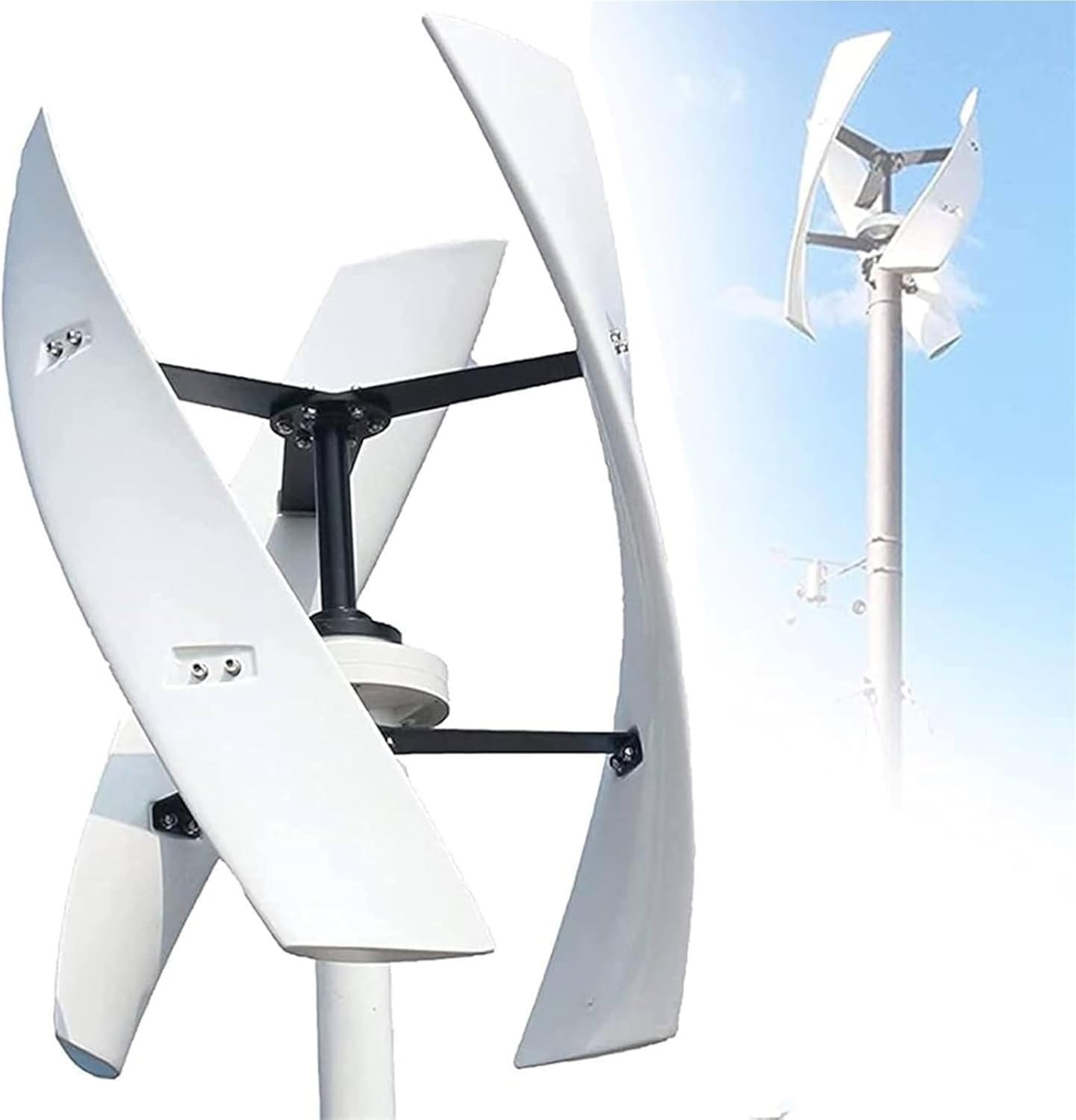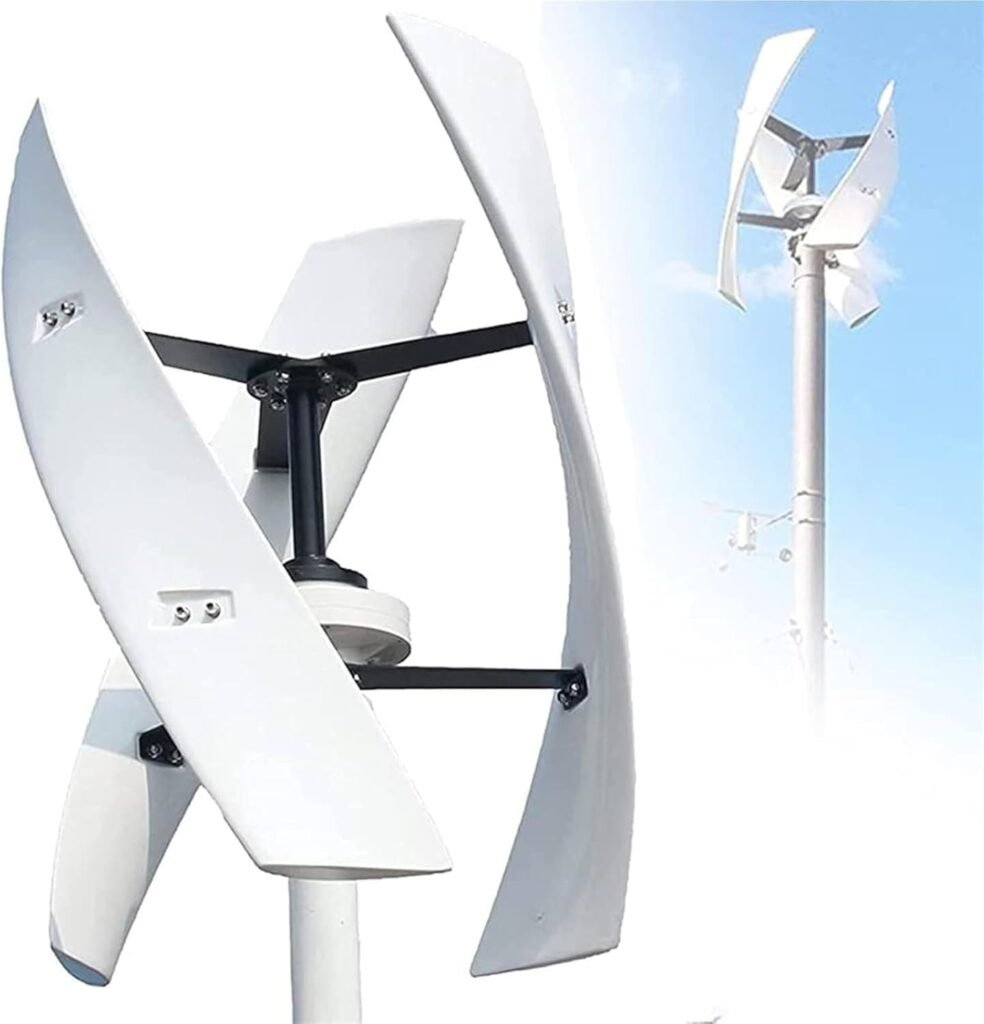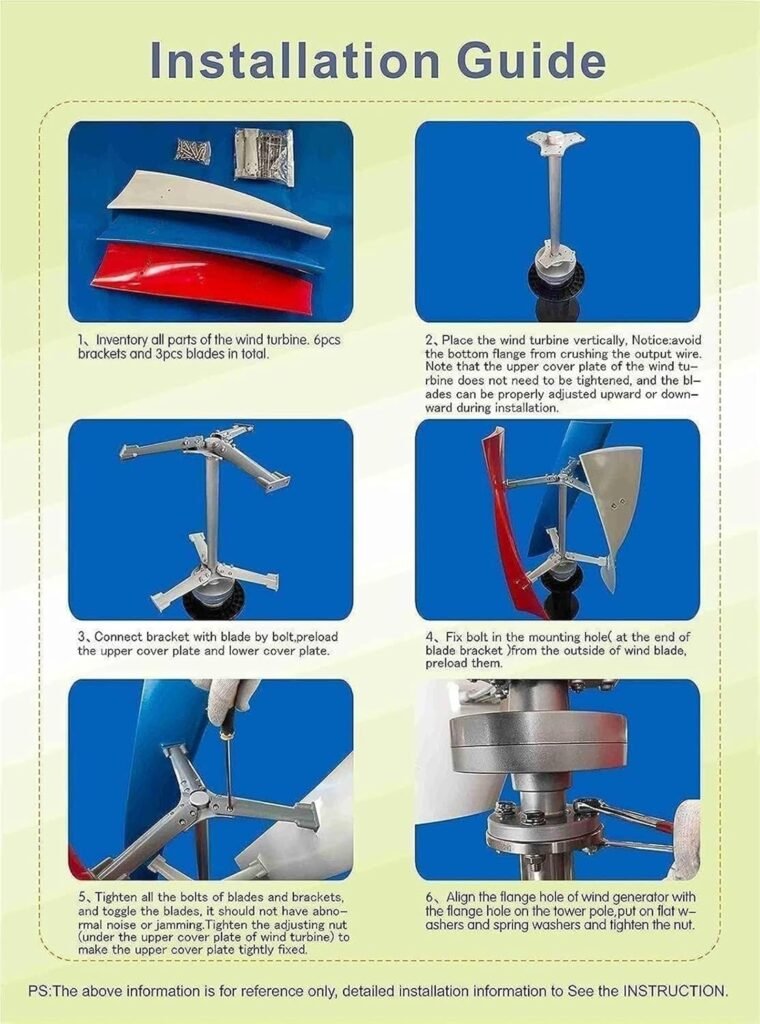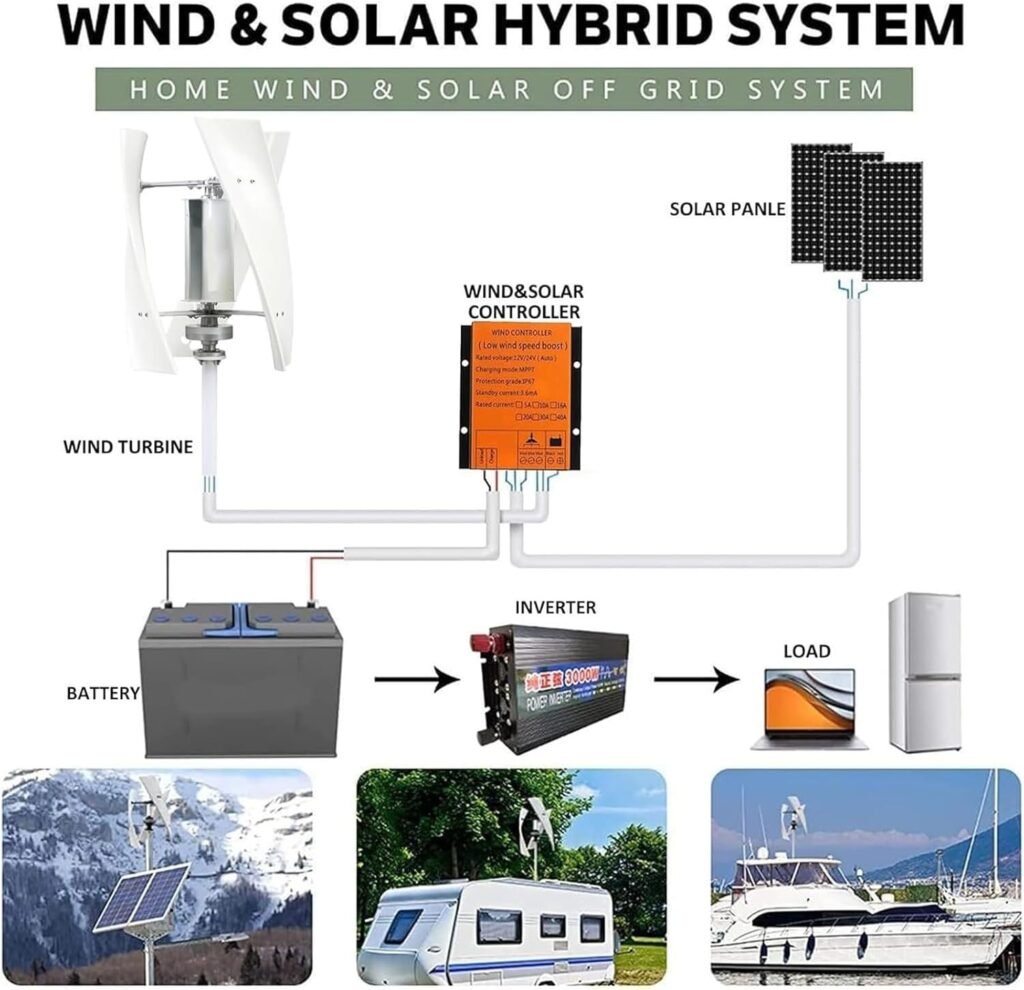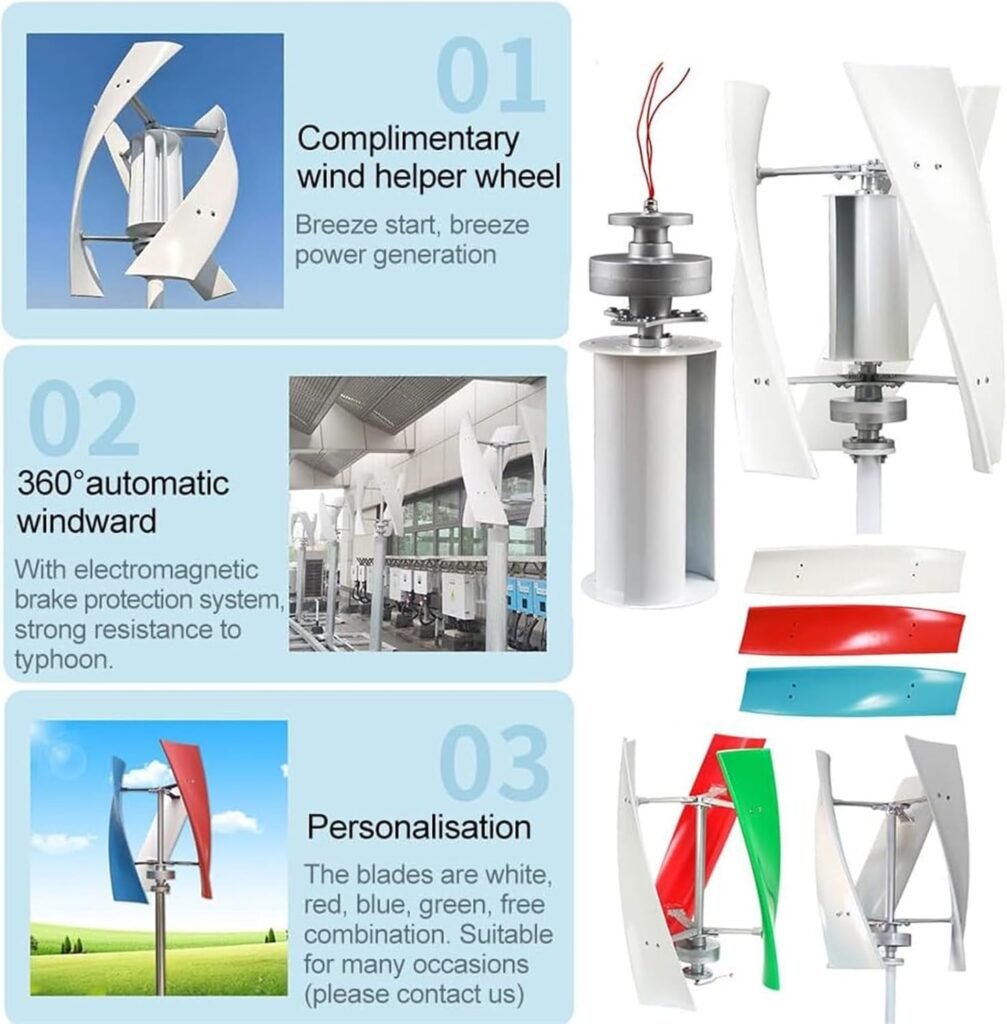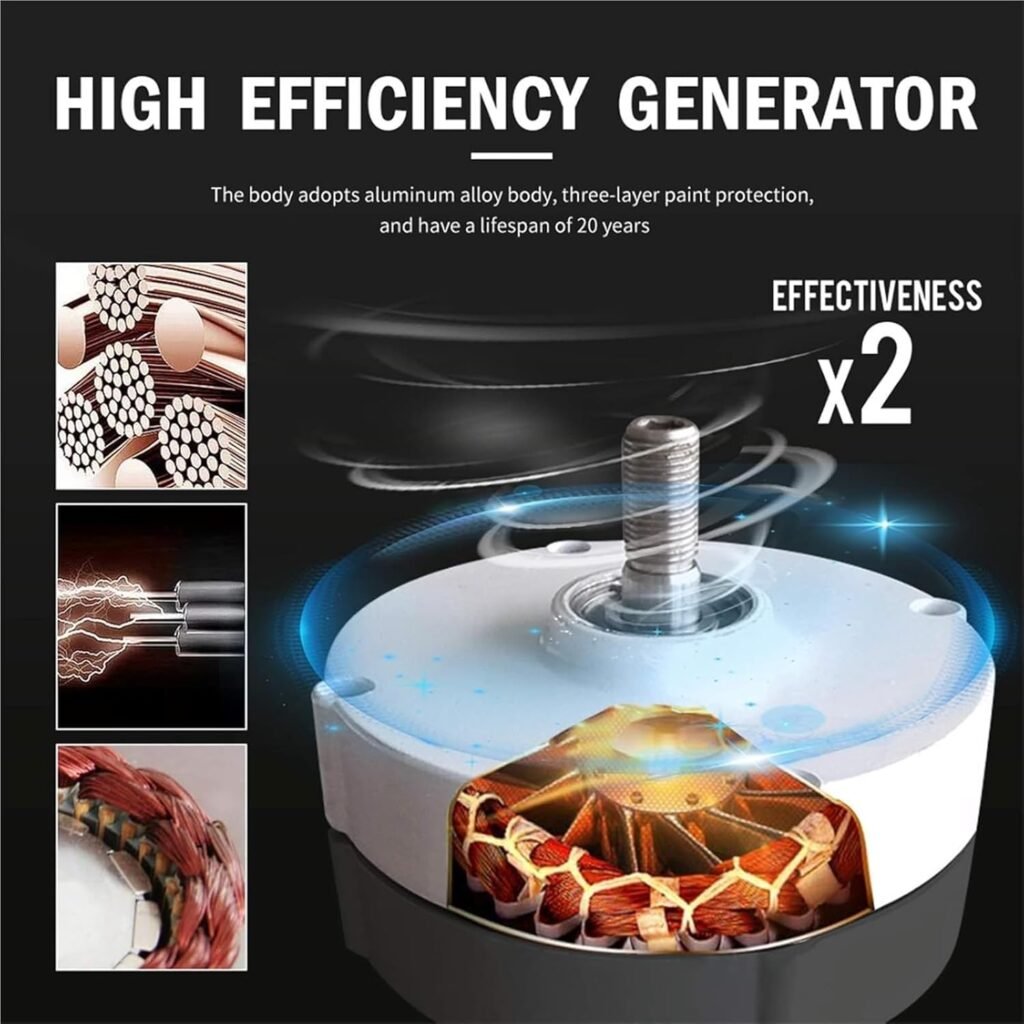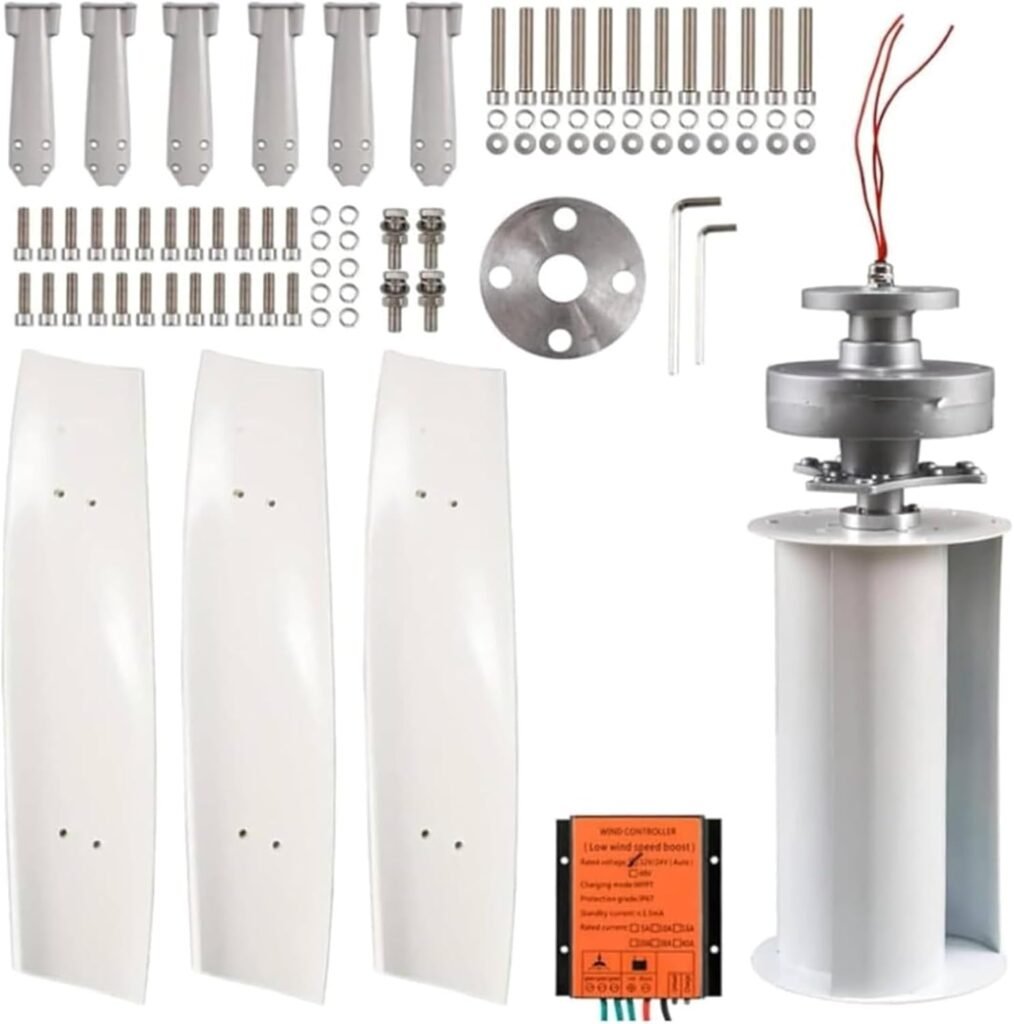10000W/12000W Upgraded Wind Vertical Axis Turbine Generator 12V 24V 48V 220V with MPPT Controller Wind Turbine Kit for Hybrid Wind Solar System
?Are you trying to decide if the 10000W/12000W Upgraded Wind Vertical Axis Turbine Generator 12V 24V 48V 220V with MPPT Controller Wind Turbine Kit for Hybrid Wind Solar System is the right choice for your off-grid or hybrid energy setup?
Overview of the product and what makes it different
You get a vertical-axis wind turbine with a distinctive spiral blade design made from high-strength FRP using synthetic injection molding. The product promises smooth, reliable operation, starting at very low wind speeds and requiring no yaw system because it adapts to wind from any direction.
You should note that this kit is marketed in two nominal power ratings (10,000W and 12,000W) and supports multiple electrical systems (12V, 24V, 48V, and 220V). The package includes an MPPT controller to optimize charging and power conversion in hybrid wind-solar systems.
Key features briefly explained
The turbine uses a maglev-style generator and a three-phase AC PMG (permanent magnet generator) to reduce startup torque and improve durability. This combination gives longer service life and better performance in variable wind conditions.
You also get built-in RPM protection limiting speed to no higher than 300 RPM to protect mechanical parts in high winds, and a low-noise aerodynamic blade design inspired by aircraft wing principles. The unit is intended to be compact and suitable for a range of settings including marine, residential, and small industrial applications.
Technical specifications table
You can use this table to quickly compare the main technical points described by the manufacturer. Keep in mind some specification details (exact cut-in speeds, full power curves) are not specified by the seller, so the table reflects the advertised highlights and configurable voltages.
| Specification | Details |
|---|---|
| Product name | 10000W/12000W Upgraded Wind Vertical Axis Turbine Generator 12V 24V 48V 220V with MPPT Controller Wind Turbine Kit for Hybrid Wind Solar System |
| Blade material | Synthetic injection-molded FRP (spiral aerodynamic blades) |
| Axis type | Vertical Axis Wind Turbine (VAWT) |
| Generator type | Maglev three-phase AC PMG (permanent magnet generator) |
| Power ratings | 10,000W / 12,000W |
| Output voltages | 12V, 24V, 48V, 220V (selectable/configurable) |
| Controller | Included MPPT controller for optimal charging and current/voltage regulation |
| Start-up wind | Advertised to start at very low wind speeds (“from the breeze”) |
| Wind orientation | 360° adaptive, no yaw system required |
| Max RPM protection | ≤ 300 RPM |
| Expected service life | 10–15 years (design life) |
| Noise | Very low; designed to be below measurable levels in natural environments |
| Typical applications | Boats, gazebos, cabins, mobile homes, off-grid homes, corporate/industrial supplement |
| Installation | Easy to install; multiple mounting options for different environments |
You should treat this table as a summary; confirm exact specs and the seller’s documentation for installation and safety limits before final purchase.
Build quality and materials
The blades are made from high-strength FRP produced by synthetic injection molding, which should give you consistent geometry and resistance to fatigue. The spiral aerodynamic shape is intended to keep the rotor running steadily and to reduce turbulence that can cause noise and wear.
You’ll also benefit from a maglev-style generator system that reduces mechanical friction and lowers start torque, which should improve longevity. Overall, the materials and design emphasize durability and long-term reliability, which is important if you plan to rely on this turbine for years.
Rotor and blades
The spiral blades are designed to increase the effective windward area and to allow operation from any wind direction. This shape also helps create smoother airflow patterns around the rotor and reduces vibration.
You should expect blades to resist UV and moisture fairly well thanks to the FRP construction, but you’ll still want to inspect them periodically for cracks, chips, or sanding losses—especially in harsh coastal or offshore environments.
Generator and electronics
The maglev generator is designed to reduce mechanical wear by using magnetic levitation principles for rotor support, resulting in lower friction and lower starting torque. The included intelligent MPPT controller handles current and voltage regulation, increasing energy capture and protecting your batteries and inverters in a hybrid system.
You’ll appreciate the combination of the three-phase AC PMG with a tracking microprocessor that aims to maximize power capture across variable winds while protecting the system from over-speed conditions.
Performance: what to expect in real-world conditions
This turbine is advertised to start at very low wind speeds and to optimize wind energy utilization with the three-phase PMG and MPPT controller. In practical terms, that means you’ll likely see power production in lighter winds than you might with many conventional horizontal-axis turbines.
You should understand that real-world power output depends heavily on average wind speed at your site, turbulence, mounting height, and local obstacles like trees and buildings. This turbine’s 360-degree acceptance and low starting torque improve its suitability for urban and semi-urban installations where wind direction and consistency are less predictable.
Noise levels and environment impact
The design claims noise levels too low to be measured in natural environments by drawing on aircraft wing design principles and horizontal plane rotation. That suggests you can install it near living spaces, on boats, or on small properties without causing significant noise complaints.
You should still check local noise ordinances and, if possible, test or monitor noise after initial installation since perceived noise is influenced by ground reflections and nearby structures.
Operational safety—RPM and over-speed protection
The turbine has maximum RPM protection, limited to no higher than 300 RPM regardless of wind speed. This mechanical/electronic safeguard is intended to prevent structural damage and maintain safe operation even during storms.
You should pair this with proper site selection and mounting systems that can handle gusts and turbulence; the RPM protection helps, but structural mounting and grounding are still critical to long-term safety.
Installation guidance and practical mounting tips
The turbine is marketed as easy to install and adaptable to various environments, including boats and mobile homes. You’ll need to plan mounting, wiring, and grounding carefully to ensure safe and efficient operation.
You should select a mounting location with the best compromise between height, exposure to prevailing winds, and structural support. Taller mounts generally increase average wind speed and reduce turbulence, but they also demand stronger foundation and guying or a sturdy pole and base.
Electrical integration with MPPT and batteries
The kit includes an MPPT controller, which you’ll use to match generator output to your battery bank and reduce losses. Configure the MPPT according to the battery voltage (12V, 24V, 48V) you select; if you want grid-compatible AC output, choose the 220V option and pair the turbine with a proper inverter and system protections.
You should ensure that your battery bank, inverter, and cables are sized appropriately. Heavy-gauge cabling reduces voltage drop, and fusing/protection is necessary to avoid damage from short circuits or generator backfeed.
Mounting options and recommendations
You can mount the turbine on short towers, rooftops, poles, or marine fittings depending on your application. For small residential or marine installations, robust pole mounts with proper vibration isolation usually work best. For larger or ground-mounted setups, consider guy wires or a reinforced baseplate with deep anchor bolts.
You should avoid mounting too close to obstructions; aim for a distance of at least several rotor diameters from trees, roofs, and other turbines to reduce turbulence. If you install on a boat, verify marine-grade mounting hardware to resist corrosion and vibration.
Hybrid system configuration and pairing with solar
Because the kit includes an MPPT controller and supports multiple voltage configurations, you can integrate it into hybrid wind-solar systems to smooth power production and charge batteries more consistently. Wind often complements solar by producing energy at night and during cloudy weather.
You should configure your charge controller strategy so that the MPPT prioritizes battery charging and works with solar charge controllers in a coordinated way. Many hybrid systems use a battery management system (BMS) or hybrid inverter with built-in charge regulation to manage inputs from both wind and solar.
Sizing your system: batteries, inverter, and balance
Choosing the right battery capacity and inverter power is crucial. The turbine’s peak ratings (10 kW or 12 kW) are nominal and contingent on wind conditions, so size batteries for daily use and expected worst-case days without wind or sun. If you plan to rely on the turbine for critical loads, oversizing battery capacity gives you more resilience.
You should also pick an inverter that can handle both the continuous and surge loads of your appliances. Hybrid inverters that accept both DC sources and AC grid lines (if grid-tied) can simplify system architecture and protect loads during transitions.
Maintenance and expected lifetime
The manufacturer states a design service life of 10–15 years and cites maglev technology to reduce wear. You’ll still want a scheduled maintenance routine to inspect fasteners, blade integrity, wiring, and bearings (if any), especially after extreme weather.
You should plan to check the turbine twice a year at minimum: inspect blades for damage, test electrical connections, confirm the MPPT and protective electronics function correctly, and ensure the mounting hardware is secure.
Troubleshooting common issues
If the turbine produces less power than expected, first inspect for obstructions, blade damage, or wiring faults. Check the MPPT controller for error indicators, and verify battery state and cable connections.
You should also test the generator output directly (following electrical safety procedures) to isolate whether the issue is mechanical or electrical. If you experience unusual noise, vibration, or high RPM alarms, shut down the turbine and inspect it for loose bolts, bent blades, or damaged bearings.
Safety considerations and regulatory compliance
You must ensure that your installation complies with local building codes, electrical codes, and any homeowner association rules. In many jurisdictions, permits are required for tall poles or rooftop-mounted turbines.
You should also verify lightning protection and grounding; wind turbines can be lightning targets and need proper grounding and surge protection for the MPPT, batteries, and inverters. Design a lockout or braking system if you’ll be servicing the turbine to ensure it can be safely immobilized.
Environmental and wildlife considerations
Vertical axis turbines tend to have lower bird strike risk than some horizontal-axis designs because of the blade shape and slower tip speeds. However, you should still consider siting to reduce impacts on local wildlife and migratory paths.
You should also think about aesthetic and noise impacts on neighbors, even though the product advertises extremely low noise. Document the system and get permissions if you are in a shared community or near protected areas.
Performance expectations in different wind regimes
In coastal or open plain environments where wind speeds are higher and more consistent, this turbine should provide greater annual energy yield than in urban or forested sites. Its low start-up torque will let you harvest energy from lighter winds more effectively than many larger horizontal-axis turbines.
You should temper expectations in highly turbulent or low-wind suburban environments; however, the 360° adaptation and compact form factor make it a reasonable choice for sites where traditional turbines would struggle.
How to estimate your annual yield
You can estimate yield by combining your site’s wind speed distribution (Weibull or average metrics), turbine power curve, and availability. Because the manufacturer does not provide a detailed power curve, you should ask for performance data from the seller or run a site-specific simulation using conservative assumptions.
You should also monitor actual output after installation to refine your yield estimates and adjust system sizing for batteries and backup generation if needed.
Pros and cons summarized
Having a quick checklist of strengths and weaknesses helps you decide if this turbine suits your needs. The following list summarizes the major selling points and the potential drawbacks.
You should weigh these points against your site specifics, budget, and energy goals.
Pros:
- Low starting torque and advertised operation at light wind speeds.
- 360° wind acceptance eliminates the need for a yaw system.
- Maglev generator and PMG design reduce wear and improve efficiency.
- MPPT controller included for smarter power regulation and hybrid integration.
- Low noise design suitable near living spaces and marine settings.
- Multiple voltage outputs (12V/24V/48V/220V) for versatile system architectures.
- Designed service life of 10–15 years with RPM protection to guard against overspeed.
Cons:
- Manufacturer power rating (10kW/12kW) depends heavily on local wind – actual output may be lower.
- Detailed power curve and cut-in speed not explicitly published; might require seller inquiries.
- Installation still requires careful site planning, mounting strength, and electrical expertise.
- Maintenance access and safety considerations for tall mounts or marine conditions.
- Warranty and after-sales support details need to be confirmed with the seller.
Who should consider buying this turbine
If you live off-grid, have a cabin, boat, or mobile home and need a compact turbine with low-start performance, this model could be a good fit. You’ll benefit from its multi-voltage capability and MPPT for hybrid systems.
You should ensure your site has reasonable average wind speeds and that you’re comfortable managing a hybrid energy system with batteries and inverters. It’s also a strong option for small businesses or farms seeking to supplement grid power and reduce electricity bills.
Who might want to look elsewhere
If you need guaranteed, continuous multi-kilowatt delivery for always-on heavy loads and your site has highly turbulent, obstructed winds, you might be better served by other wind technologies or larger horizontal-axis turbines sited on taller towers. Also, if you require detailed manufacturer power curves for precise financial modeling, confirm data availability before buying.
You should evaluate your energy needs and consider a professional site assessment if you’re unsure.
Installation cost and additional equipment to plan for
The initial purchase is only part of your total cost. You’ll also need to budget for the mounting structure, cabling, batteries, inverter, surge protection, fuses, and possibly a professional installer. Shipping and import duties can also add to cost if bought from overseas sellers.
You should plan for the following additional expenses: reinforced mounting pole or tower, concrete base or guying hardware, battery bank sized to your needs, a compatible inverter or hybrid inverter, proper cabling and conduit, lightning protection, and permits.
Suggested checklist before purchase
Before you commit, verify these items: system voltage you want (12V, 24V, 48V, 220V), expected mounting height, local wind data, inverter compatibility, battery bank type and capacity, and warranty/after-sales terms.
You should also ask the seller for installation manuals, detailed electrical diagrams, and power curves if available.
Real-world use cases and examples
This turbine suits a variety of scenarios. For example, you can mount it on a small coastal boat to supplement battery banks for navigation electronics and lights. You can also install it on an off-grid cabin paired with solar panels to provide more consistent charging through varying weather.
You should consider using it for remote telecom repeaters, agricultural sensor stations, or as a backup to solar installations where wind is complementary to sunshine.
Example hybrid configuration
A practical hybrid setup might include the turbine configured to 48V to charge a 48V battery bank, a hybrid inverter to convert DC to AC for household loads, and a solar array feeding into the same battery bank via its own MPPT charge controller. In this setup, the turbine produces at night and during storms while solar adds power during daylight.
You should design the system so the charge controllers and inverter communicate or have a coordinated charging strategy to maintain battery health.
Troubleshooting and support tips
If you encounter startup problems, verify that wiring polarity is correct and that the MPPT sees generator input voltage. Inspect blades for obstruction and confirm the rotor turns freely. Check grounding and surge protective devices if the system is tripping or showing erratic behavior.
You should keep a log of performance data (wind speed if you can measure it, battery voltage, and turbine power output) to diagnose intermittent issues and to provide useful information to the seller or technician if you need support.
When to call a professional
Call a certified electrician or wind specialist for complex electrical integration, high-mast installations, or if you suspect structural integrity issues with the mount or turbine. Professional installation reduces risk of damage and ensures compliance with local codes.
You should also rely on professional help for lightning protection installation and for commissioning if you plan to grid-tie components or require inspections.
Frequently asked questions (FAQ)
You’ll likely have a few common questions before buying. Here are clear answers to typical concerns.
Q: Does it require a yaw mechanism?
A: No. The vertical-axis design adapts to wind from any direction, eliminating the need for a yaw system.
Q: Can I use it with existing battery systems?
A: Yes, provided you configure the MPPT to match your battery voltage (12V/24V/48V). For AC systems, choose the 220V option with a compatible inverter.
Q: Is it noisy?
A: The manufacturer claims noise is below measurable levels in natural environments due to aerodynamic blade design. You should still test on-site, as environmental reflection can alter perceived noise.
Q: What maintenance does it need?
A: Periodic inspections of blades, fasteners, wiring, and the MPPT electronics. Expect a twice-yearly check as a baseline and after storms.
You should contact the seller for warranty details, spare parts availability, and any installation manuals before purchase.
Final thoughts and purchase considerations
You should consider this turbine if you want a compact, low-start, low-noise vertical-axis wind solution that fits into hybrid wind-solar systems. Its multi-voltage outputs and included MPPT controller make it flexible for a range of applications.
You should verify performance data with the seller, confirm warranty and support terms, and plan for professional installation if you’re unsure about structural mounting or electrical integration. With proper siting and setup, this turbine can be a valuable part of your renewable energy system.
Disclosure: As an Amazon Associate, I earn from qualifying purchases.
